
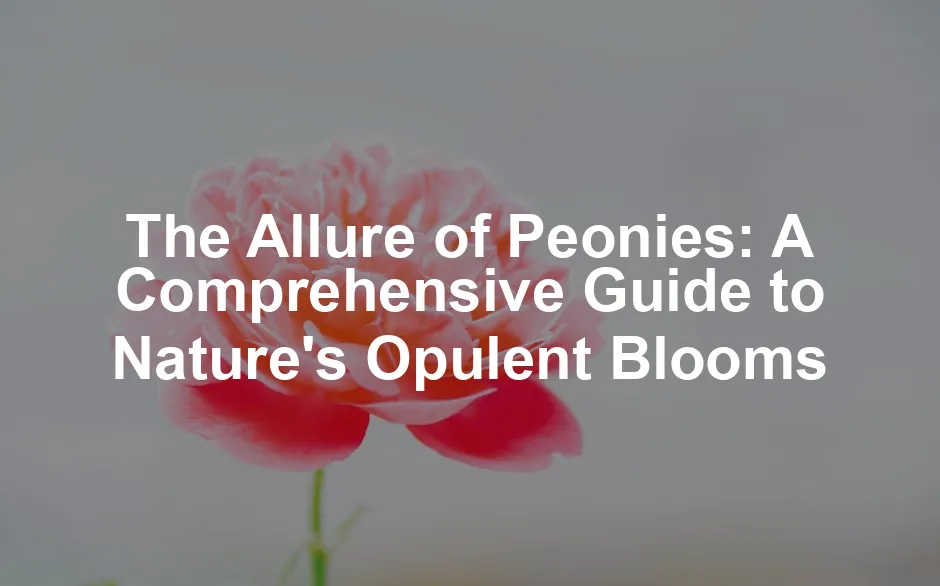
The Allure of Peonies: A Comprehensive Guide to Nature’s Opulent Blooms
Introduction
Welcome to the opulent world of peonies, where petals reign supreme! Often dubbed the “queen of flowers,” these blooms are nature’s way of showing off. With their lush, voluminous petals and enchanting fragrance, peonies have charmed gardeners, florists, and flower enthusiasts for centuries. These beauties are not just a feast for the eyes; they come with a rich history and cultural significance that makes them truly special. Peonies trace their roots back thousands of years, originating in the lush landscapes of Asia and Europe. They’ve been cultivated in gardens since the Tang dynasty, becoming symbols of wealth and honor, particularly in Chinese culture. Who wouldn’t want a flower that whispers tales of grandeur and elegance? These blooms have a flair for the dramatic, bursting forth in an array of colors ranging from pristine whites to vibrant pinks and deep reds. Imagine hosting a gathering, and your guests are greeted by these stunning flowers—instant showstoppers! But what’s not to love? Peonies are often favored for their ability to bloom profusely, providing armloads of flowers that can last for days. Gardeners adore them for their resilience and longevity, with some varieties living for over a century! Yes, you heard that right. They’re like the floral equivalent of a fine wine, improving with age. Whether you’re looking to add a touch of elegance to your garden or create breathtaking floral arrangements, peonies are the perfect choice. Plus, to ensure your peonies thrive, consider using Peony Fertilizer to give them the nutrients they crave! As we wander deeper into this floral fantasy, we’ll cover everything from their scientific classification to tips for growing them like a pro. So, grab your gardening gloves and let’s embark on this delightful journey through the captivating world of peonies. Trust us; your garden will thank you!
Summary
In this comprehensive guide to peonies, we’ll unfold the mysteries surrounding these captivating blooms. Here’s a sneak peek of what’s in store:- Scientific Classification and Features: We’ll explore the taxonomy of peonies, including their genus, family, and the various species that make them unique. This section will highlight their morphological features, showcasing why they’re so adored among gardeners and florists alike.
- Diverse Species and Varieties: Peonies come in many shapes, sizes, and colors. We’ll delve into the different species and varieties, from the classic herbaceous types like Paeonia lactiflora to the stunning tree peonies. Each has its unique characteristics that set it apart.
- Growing and Caring Tips: Want to grow peonies that would make even the most seasoned gardener swoon? We’ll provide essential tips and best practices for planting, maintaining, and nurturing these beauties. From ideal sunlight to soil types, we’ve got you covered.
- Cultural Significance: Peonies are steeped in history. We’ll take a look at their symbolism in various cultures and how they’ve evolved through the years. You’ll find out why they’re celebrated in festivals and art.
- Creative Uses: Beyond gardening, peonies have culinary potential! We’ll share innovative ideas for incorporating these blossoms into floral arrangements and even highlight their edible aspects. Yes, you can add a dash of floral elegance to your salads and teas!
- FAQs: Got questions about peonies? We’ll address common inquiries, from their best growing conditions to how to care for them during winter.

Cultural Significance
Peonies have woven their way into the fabric of various cultures throughout history. In ancient China, they were not just pretty blooms; they symbolized wealth and honor. These flowers were so revered that they became the national flower of China in 1903. The Chinese even celebrated the peony with grand festivals, showcasing their beauty and cultural importance. Who knew flowers could have such fancy titles? In Japan, peonies are associated with bravery and good fortune. They often appear in traditional art forms and have inspired countless paintings and poetry. Imagine a samurai, his armor gleaming, standing tall with a peony in hand. Now that’s a picture worth a thousand words! Over in Serbia, peonies have their own folklore. They are believed to bring good luck and protection against evil spirits. So, if you’re ever feeling a bit superstitious, a peony might just do the trick! And to keep those spirits at bay, how about adding some Organic Pest Control Spray to your gardening arsenal! In Western cultures, peonies have also made their mark. They symbolize romance and prosperity, making them popular wedding flowers. Couples often choose peonies to express their love, hoping to capture a bit of that floral magic on their special day. After all, who wouldn’t want to say “I do” surrounded by the elegance of peonies?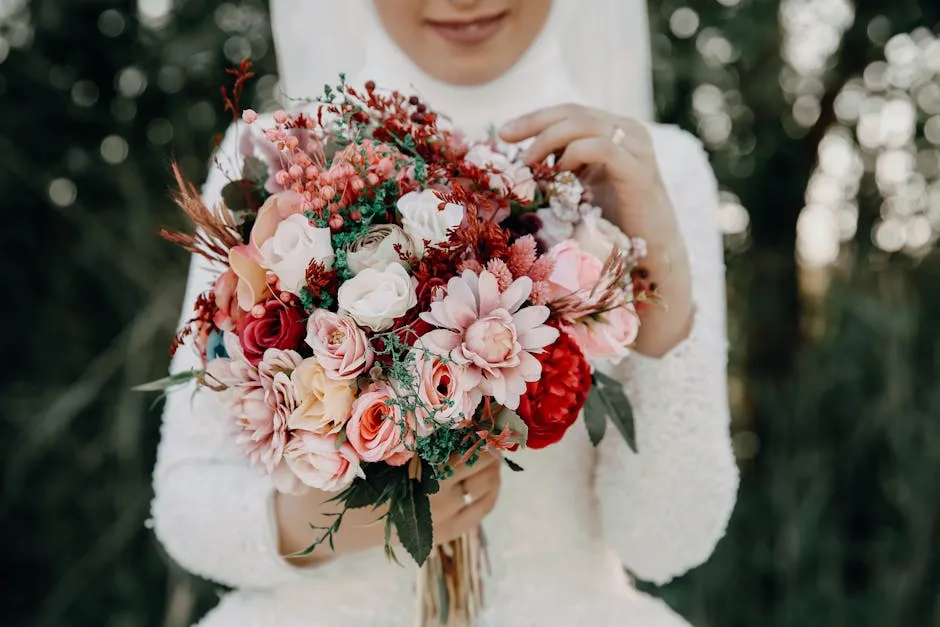
Creative Uses for Peonies
Peonies aren’t just beautiful; they are versatile too! When it comes to floral arrangements, they steal the show. Imagine a wedding bouquet bursting with luscious peonies, surrounded by soft greenery. The large blooms add a touch of opulence, making any arrangement a visual delight. They pair well with roses, hydrangeas, and even wildflowers, creating a stunning contrast that’s hard to resist. To perfect your floral art, make sure to have the right tools, like Floral Scissors for clean cuts! For a unique twist, consider using peonies in a centerpiece. Mix them with vibrant seasonal blooms or go monochromatic for an elegant look. Your dining table will become the envy of everyone at your next dinner party! But wait, there’s more! Peonies are also edible. Yes, you read that right! Their petals can be used in salads, adding a pop of color and a hint of sweetness. They’re perfect for impressing guests or simply sprucing up your everyday meals. Want something refreshing? Brew a delightful tea using peony petals. It’s like sipping on a floral hug! Speaking of tea, why not enjoy it in a beautiful Floral-Themed Mug?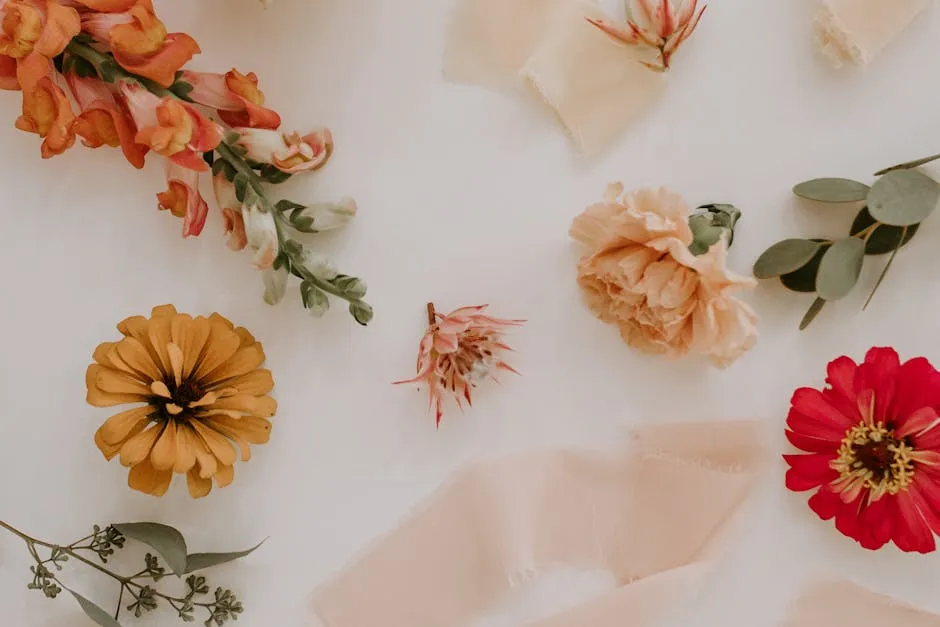
FAQs
What are the best conditions for growing peonies? Peonies love full sun and well-drained soil. Aim for at least six hours of sunlight daily. How long do peonies typically bloom? Peonies bloom for about 7-10 days, depending on the variety. Enjoy every moment! Can peonies be grown in containers? Absolutely! Just ensure your container has good drainage. They can thrive in pots but need ample space for their roots. Consider using Decorative Planters to enhance your space! What is the symbolism of peonies in different cultures? Peonies symbolize wealth and honor in China, bravery in Japan, and romance in Western cultures. They are also thought to bring good luck in Serbia. How do I care for peonies in winter? Cut back the foliage in the fall and apply winter mulch after the ground freezes. This helps protect the roots from harsh temperatures.
Peony Varieties
Peonies are not just a pretty face in the garden; they come in various forms that make them even more delightful. The two main types of peonies are herbaceous and woody, each with its unique charm.Herbaceous vs. Woody Peonies
Herbaceous peonies are the perennial champions. They die back to the ground each winter, only to spring back with gusto in the warmer months. Their lush foliage and vibrant blooms are a sight to behold, making them a garden favorite. Examples include the classic Paeonia lactiflora, known for its stunning pink blooms, and Paeonia officinalis, the European peony with its rich history. On the flip side, we have woody peonies, also known as tree peonies. These beauties are deciduous shrubs that boast woody stems. Unlike their herbaceous cousins, they maintain their structure year-round, adding delightful height to your garden. Paeonia delavayi is a standout in this group, featuring gorgeous yellow flowers, while Paeonia rockii dazzles with its big, bold blooms and striking dark markings.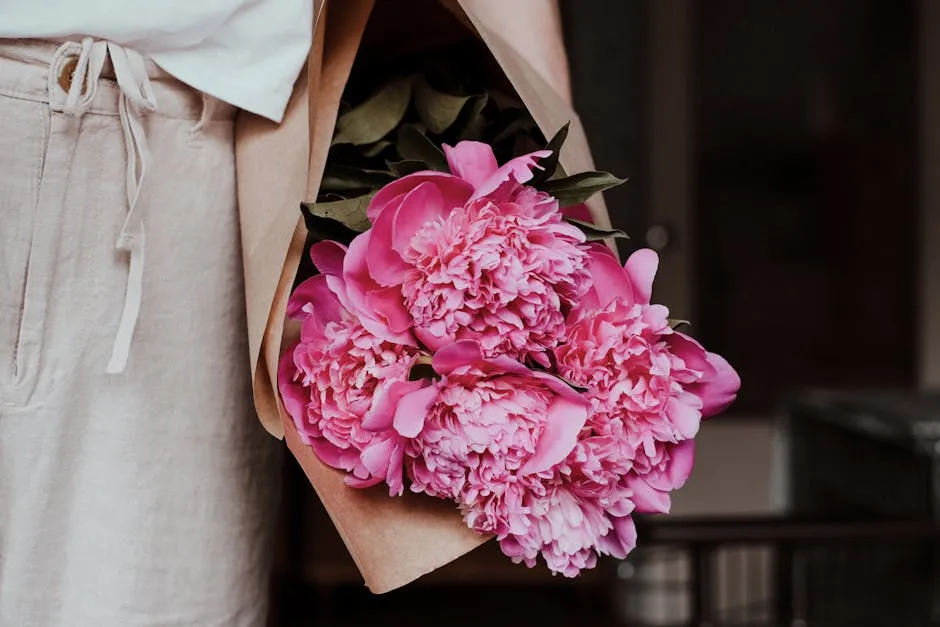
Notable Herbaceous Species
Let’s shine a spotlight on some herbaceous stars! Paeonia lactiflora is often the belle of the ball, with large, fragrant flowers that bloom in a variety of colors. It’s the quintessential peony that many gardeners dream of. Then we have Paeonia officinalis, the age-old favorite that has graced gardens for centuries. Its deep, rosy hues evoke nostalgia, reminding us of grandmothers’ gardens and sunny afternoons spent in bloom. And to keep track of your favorites, a Gardening Book for Beginners could be just what you need! Other herbaceous varieties include Paeonia veitchii, which offers pink flowers with a delightful fragrance, and Paeonia tenuifolia, known for its fern-like leaves and vibrant red blooms that truly pop. These species are not just beautiful; they’re also resilient, making them excellent choices for any garden enthusiast.
Featured Woody Species
Now, let’s take a moment to appreciate the elegance of woody peonies. Paeonia delavayi is a real showstopper. Its unique yellow blooms exude a sense of rarity, making it a prized addition to any collection. This variety thrives in sunny locations, where it can truly shine. Then there’s Paeonia rockii, often referred to as the “King of the Peonies.” Its large, lavish flowers are typically white with striking dark purple markings. They add a dramatic flair to any garden, captivating onlookers with their beauty. These tree peonies are not just plants; they’re statements! To truly showcase these beauties, consider a Peony-Themed Wall Art for your home!Flower Types
Herbaceous peonies are not just one-note wonders. They come in seven distinct flower types, each with a personality of its own.
- Single: This type showcases a single row of petals, exposing its stunning center. Think of it as the minimalist of peonies.
- Japanese: Featuring a unique arrangement of petals and staminodes, Japanese peonies are like the quirky artists of the flower world.
- Anemone: These have petal layers surrounding a fluffy center that resembles anemone flowers. They’re the softies of the bunch.
- Triple: Similar to the Japanese type but with three petals and a fuller appearance. They’re the overachievers!
- Semi-double: With more petals than the single type but fewer than the double, these peonies strike a balance. They’re all about moderation.
- Bomb: Characterized by a rounded shape with tightly packed petals, these blooms are like fluffy clouds in your garden.
- Double: The classic peony look! Full and lush, these blooms boast layers upon layers of petals, making them the ultimate show-stoppers.

Planting Techniques
Planting peonies is straightforward. Start by selecting a sunny spot in your garden. Peonies thrive in well-drained soil, so avoid areas that hold water. Dig a hole about 2 feet wide and 1 foot deep. Place the peony root in the center, ensuring the eyes (buds) are about 1-2 inches below the soil surface. This depth helps protect them from harsh winter conditions. Space your peonies at least 3 feet apart. This allows them room to grow and flourish without overcrowding. Give them a little love and support, and soon you’ll have a stunning display!Maintenance Tips
Once your peonies are planted, they need regular care. Water them deeply once a week during dry spells. Peonies prefer moist soil but dislike soggy roots. During spring, apply a balanced fertilizer to give them a boost. Just keep it away from the crown to prevent damage. As summer rolls in, keep an eye out for pests like aphids. A gentle spray of water can help dislodge them. In fall, cut back the foliage to ground level. This helps prevent diseases and prepares your peonies for winter. With proper care, your peonies will reward you with stunning blooms! And speaking of care, make sure to keep track of your gardening tasks with a Gardening Apron to hold all your tools!Common Challenges
Like any diva, peonies can have their challenges. They might face diseases such as botrytis blight, which causes gray mold. To combat this, ensure good air circulation and avoid overhead watering. Another issue is ants. While they don’t harm the peonies, they can be pesky little critters. If they become a nuisance, a simple spray of soapy water will send them packing. Root rot can also occur if the soil is too wet. To prevent this, make sure you plant in well-drained areas. With a little diligence, your peonies will thrive despite these challenges! And for those looking to test their soil, consider using a Garden Soil Tester for optimal planting!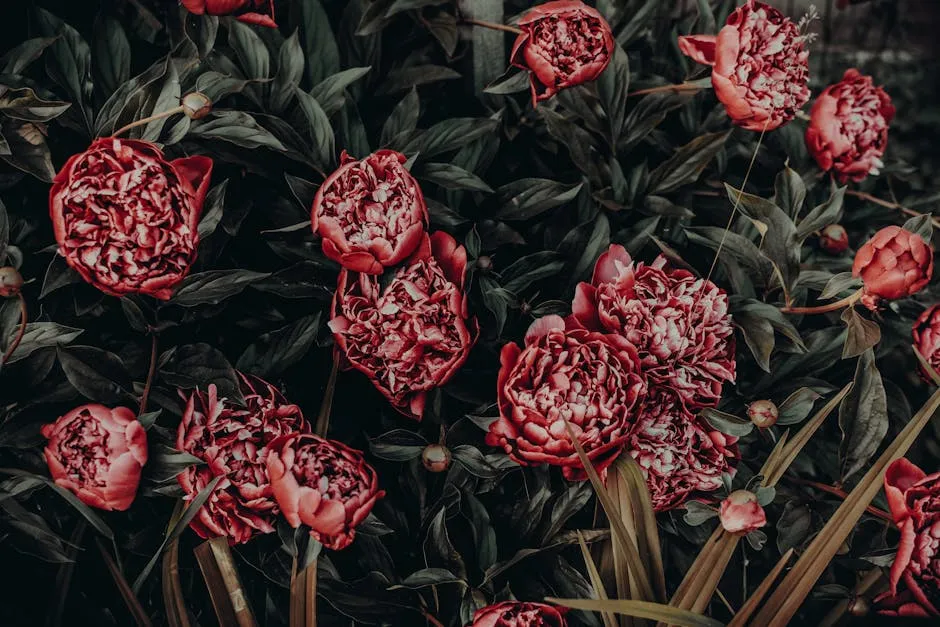
Creative Uses for Peonies
Floral Arrangements
Peonies are the rock stars of floral arrangements! Their large, fluffy blooms can turn any bouquet into a masterpiece. Want something fresh? Try mixing peonies with vibrant seasonal flowers like sunflowers or daisies. It’s like a summer party in a vase! For a romantic touch, pair them with delicate roses and soft greenery. This combination creates a timeless elegance that’s perfect for weddings or anniversaries. How about using peonies for a monochromatic arrangement? A bouquet of various shades of pink peonies can wow your guests without breaking a sweat!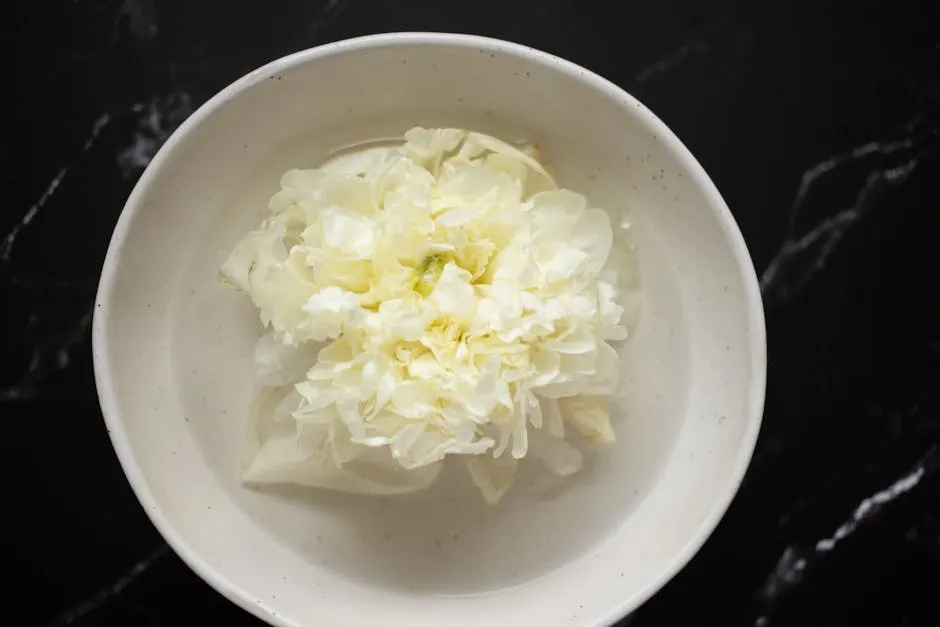
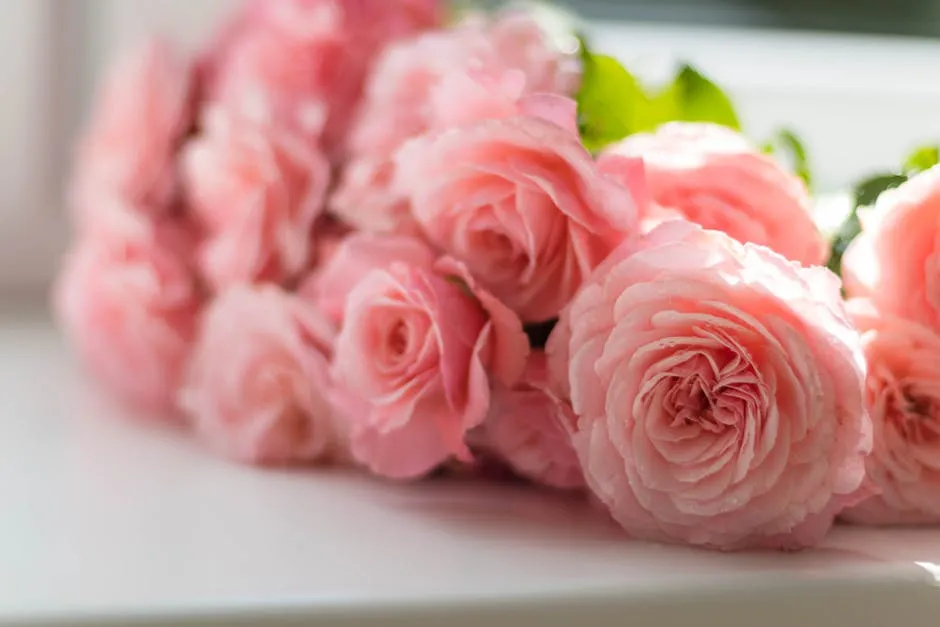
Culinary Applications
Hold onto your gardening gloves! Peonies aren’t just pretty faces; they’re also edible. Yes, you can munch on these floral delights! The petals of peonies are not only beautiful but also tasty. Toss them into salads for a pop of color and a hint of sweetness. Your guests will be amazed when you serve a salad that looks like a floral garden. Want something soothing? Brew a delightful tea using peony petals. Simply steep the petals in hot water for a refreshing drink that’s light and floral. It’s like sipping on a whisper of springtime! And why not sweeten the deal with some Peony Tea? Not only are they a treat for the eyes, but peonies can also be a conversation starter at your next gathering. “Oh, these? Just a little something from my garden!” You’ll bring elegance to the table while impressing everyone with your culinary creativity.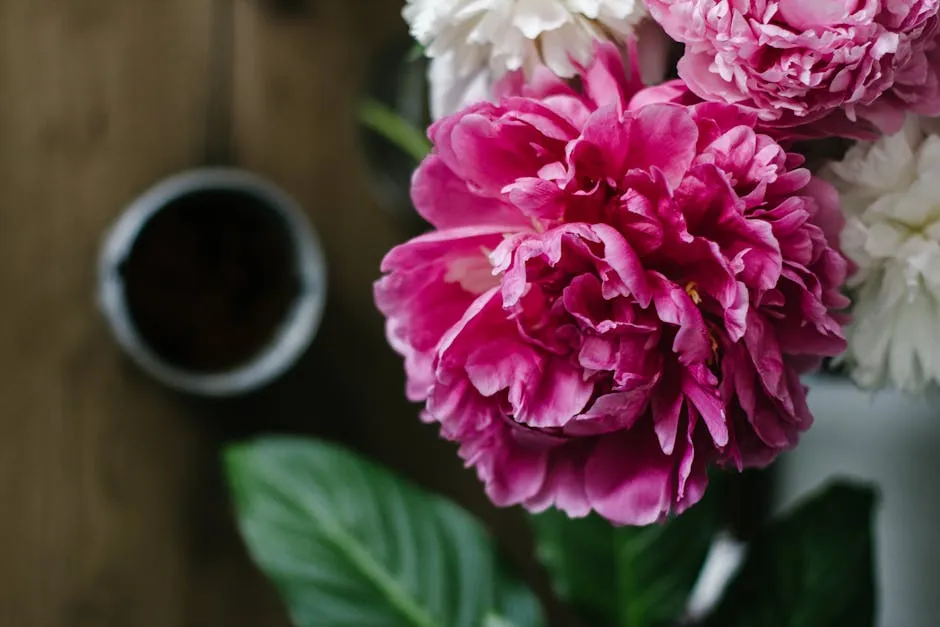
Conclusion
Peonies are more than just flowers; they are enchanting elements that transform spaces and elevate moods. Their stunning blooms can brighten any garden or home, making them a cherished addition for many. With their rich cultural significance, peonies whisper stories of wealth, honor, and love across generations. Incorporating peonies into your surroundings brings a touch of grace and beauty that lasts. Whether you grow them for their breathtaking blooms or use them in creative arrangements, these flowers will surely captivate your heart. And if you’re looking for a way to decorate your space, consider some Peony-Themed Coffee Table Book to inspire your floral passion!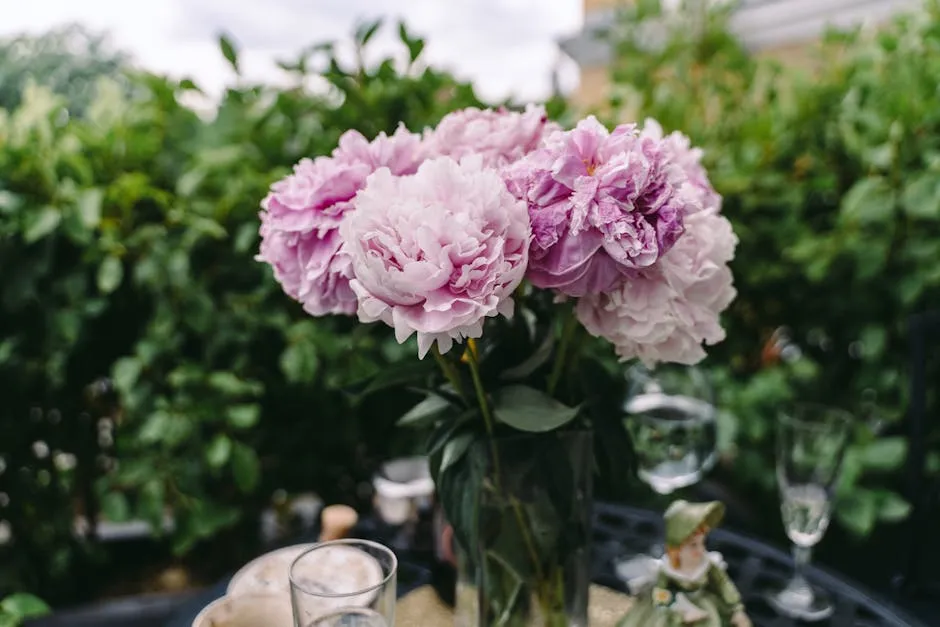
For more insights on how to keep your garden thriving, check out these seasonal maintenance tips for selfwatering container gardens in fall 2024.
Please let us know what you think about our content by leaving a comment down below!
Thank you for reading till here 🙂
If you’re facing any difficulties in your gardening journey, learn how to overcome common challenges in growing exotic fruits in temperate regions.
All images from Pexels



